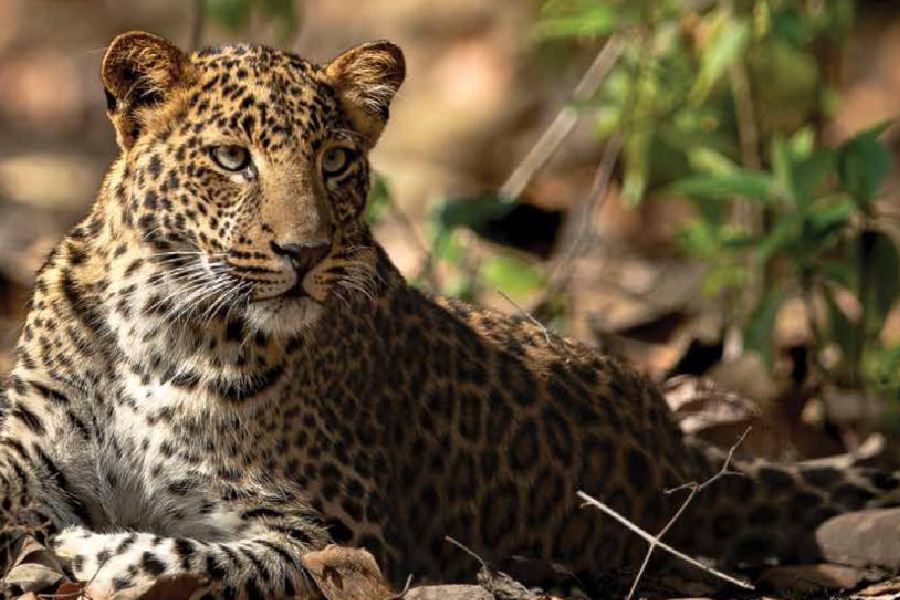India’s estimated wild leopard population has grown by around 1,000 over the past four years, the rise occurring amid concerns about their presence in human-dominated landscapes and attacks on livestock or people.
The Union environment ministry said on Thursday that the country’s latest leopard population assessment exercise had yielded an estimate of 13,874 in 2022, compared with 12,852 in 2018.
The population over the past four years is “stable”, the ministry said in a report describing the results of the estimation exercise. The stable population “indicates that growth is minimal and in comparison to the tiger, (leopard) population is likely getting impacted by people in multiple use areas,” it said.
The ministry said although current trends in leopard poaching are unknown, commercial poaching and people’s retaliation to conflict with leopards seem to be the likely cause of the stable population.
North Bengal has marked the highest growth rate in the estimated population, a 2.8-fold increase from 83 leopards in 2018 to 233 in 2022. Across the northeastern hills and Brahmaputra floodplains, the population increased 2.4-fold from 141 in 2018 to 349
in 2022.
The new nationwide estimate covers about 70 per cent of the country’s leopard habitat as the Himalayas and semi-arid regions of the country that are not tiger habitats were not sampled, the ministry said.
Across areas sampled in 2018 and 2022, the leopard population has grown by 1.08 per cent per year, the ministry said. But this growth has not been uniform. Populations have fallen by 3.4 per cent per year in the Shivalik hills and Gangetic plains and show the highest growth rate of 1.5 per cent per year in central India and the Eastern Ghats.
Madhya Pradesh has the largest population, an estimated 3,907 leopards, followed by Maharashtra (1,985), Karnataka (1,879), Tamil Nadu (1,070) and Rajasthan (721).
The National Tiger Conservation Authority and the Wildlife Institute of India, Dehradun, conducted the 2022 population estimation exercise that involved placing cameras at over 32,800 locations and foot surveys covering over 641,000km to look for carnivore signs and assess prey abundance.
The population growth comes against a backdrop of human populations expanding into leopard habitats and a consequent rise in the incidents of human-leopard
conflicts.
In some instances, these conflicts have escalated into violence with communities retaliating against leopards that preyed on livestock or injured humans, the ministry has said in a report describing the findings of the population estimation exercise.
The report, citing an expected increase in the leopard population in the future, has underlined the need for scientific efforts for a deeper understanding of leopard behaviour and their natural history to devise effective management strategies.
Multiple studies across the country have in recent years contributed to knowledge about leopard populations, habitat use, food habits and human-leopard conflicts, there remains notable gaps in scientific understanding of their behaviour in different natural conditions.
A study by Pritha Dutta, a specialist in human-environment interactions and assistant professor at The Energy and Resources Institute School of Advanced Studies, New Delhi, had documented 439 instances of leopard-caused livestock losses across 10 villages around the Buxa tiger reserve in Bengal in 2020-21.
The Union cabinet on Thursday approved a one-time budgetary support of Rs 150 crore for the International Big Cat Alliance, a global initiative that will seek to enhance conservation efforts to protect the tiger, lion, leopard, cheetah, snow leopard, puma and jaguar.
Prime Minister Narendra Modi had called for such an alliance in 2019 and
had launched the alliance in April last year while commemorating 50 years of India’s Project Tiger.










